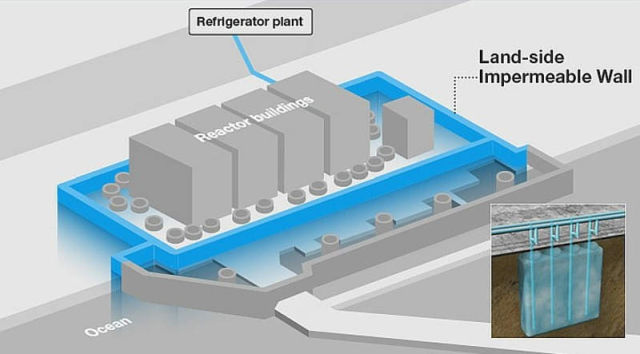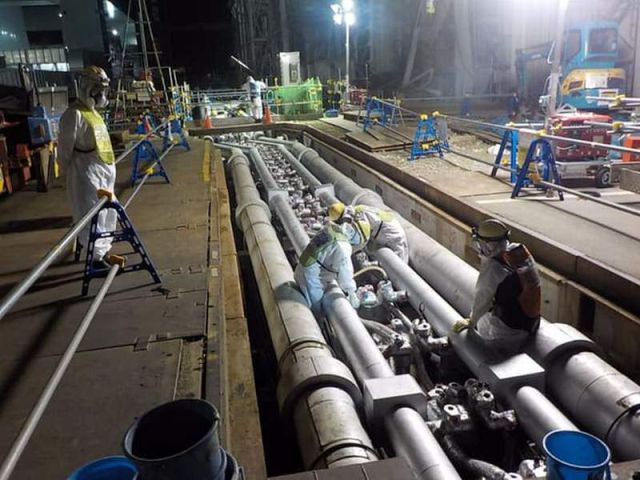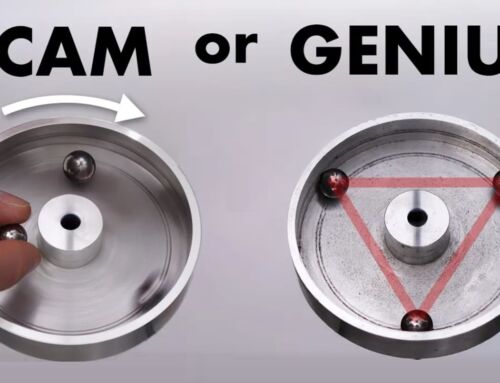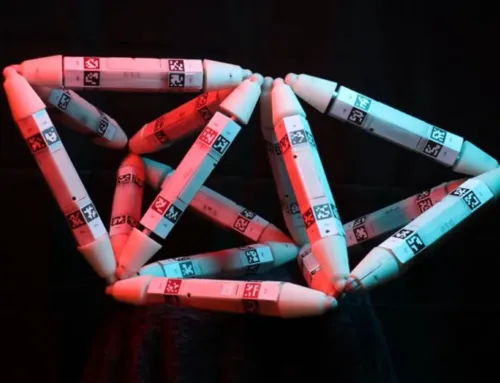An underground ice wall to seal Fukushima‘s nuclear waste, is activated, in Japan.
Japan’s Nuclear Regulation Authority said the project, which was completed last month, can now be activated.
Image credit TEPCO
Full operation of the frozen wall at Fukushima Daiichi has begun and the entire process should take about 8 months to complete.
Chief Decommissioning Officer Naohiro Masuda, sad at the news conference:
“We understand that the biggest concern is that the contaminated water might escape from the buildings. We must not let that happen.”
Press release:
TOKYO, March 30 – Regulator approval to activate the frozen soil wall to surround reactor Units 1-4 at Fukushima Daiichi NPS was obtained today, and activation will take place in stages over the coming months to start shortly, TEPCO announced today.
Construction on the government-financed wall began in 2014 with Kajima Corporation as the main contractor. The facilities required for construction of the wall, to form a perimeter around the four reactor units, is designed to create a frozen underground barrier to prevent the intrusion of groundwater which would increase the contaminated water, and is now complete. Approval has been given to activate approximately 95 percent of the wall, and approval for the remaining portions will be sought after assessment of the results of the first stage. After completion of the first stage, the underground water inflow will be reduced to approximately 50%.
A reason the full perimeter will not be frozen is to allow examination of how the frozen barrier affects relative water levels inside and outside the reactor buildings. It is important to ensure that relative water levels are not changed in a way that would enable contaminated water to escape from the basements of those buildings into the surrounding groundwater. By leaving a gap in the wall, it is expected that groundwater within the perimeter will stay at a higher level than the water inside the basements, thus preventing the latter’s escape.
Only once it is ascertained that water will not flow out of the basements even if the wall is closed, will approval be sought to close the remaining 5 percent and establish a completely frozen perimeter. No firm timetable has been announced, but it is expected that the entire process will unfold over a period of months.
Water Management Strategy Has Reduced Contamination
The ice wall is part of a multi-layered strategy to divert, contain, treat, and safely store groundwater and storm water at Fukushima Daiichi. In addition to the ice wall, these measures include the seaside impermeable wall, the subdrain pumping system, the groundwater bypass system, the ALPS and other water treatment systems, and the strengthening of storage facilities. The cumulative result of these efforts has been a significant reduction in the accumulation of contaminated water, the elimination of most nuclides from stored water, and a reduction of the radiation dose at the site boundary as well as within the facility.
source Tepco







Leave A Comment